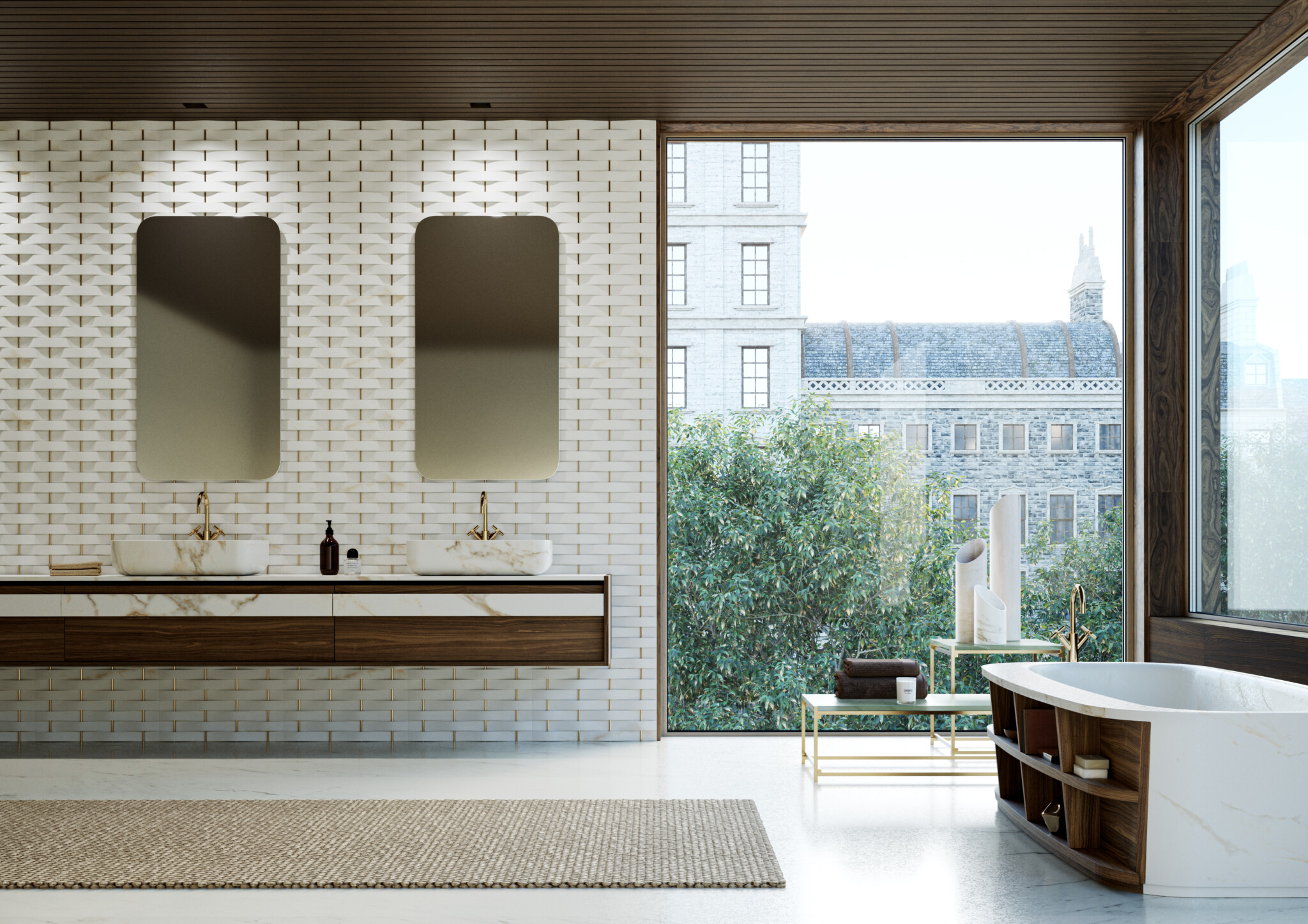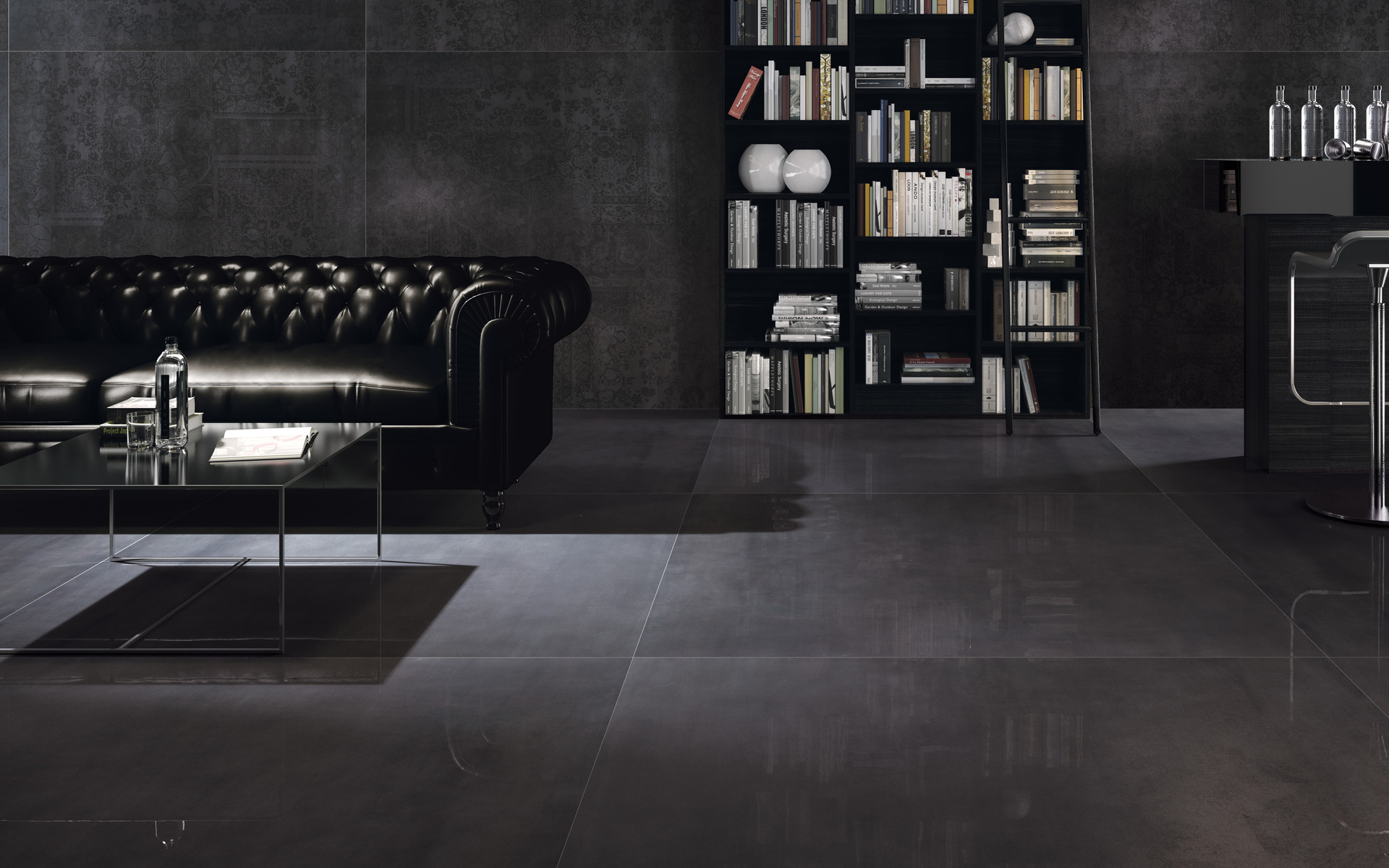Porcelain and Ceramic both are a part of the larger ceramic family that includes tile shapes derived from natural earthen clay & hardened by heat. However, these 2 renowned tiling giants have often been used interchangeably, owing to the negligible difference in their visual appearances & similar installation procedures. Though there are various attributes that set them apart from each other like Baking, Functional features, and Applications. So let’s dig deeper into these tile segments to get a better understanding of how to distinguish between the two:
Appearance
Both tiles are often manufactured with surface glazing that makes them indistinguishable. One can’t always tell them apart by taking a quick glance at the installed surfaces, so here are a few subtle distinctions that help us identify them.
- Porcelain tiles have the same colour throughout the entire material which can be easily noticed in a loose or chipped-off tile but it’s not the case with ceramic tiles. They are often glazed on the outside but the chips reveal a slightly different colour underneath.
- The finish of Porcelain tile is smoother than that of ceramic. They have an even surface all over but when it comes to Ceramics, the unglazed portion possesses a coarser surface which can be seen once we flip it over.
- Regarding their weights, Ceramic tiles seem slightly lighter in comparison since they aren’t as dense as porcelain.
Baking

The basis of differentiation between these tiles is born from the composition of ingredients in the production process. Although both being clay-based & kiln-fired, they have some distinguishing factors.
Porcelain tiles consist of a mixture of fine clay, sand, and feldspar. The sand strengthens the mixture & feldspar makes the tile denser than standard ceramic tiles, thus stronger. They are fired at higher temperatures ranging from 2,200 to 2,500 degrees Fahrenheit to reduce the water content which makes them super hardwearing. They majorly produce large format tiles along with small format tiles.
On the other hand, ceramic tiles are made up of coarser clay, minerals, and water. They are fired at lower temperatures generally no more than 1,650 degrees Fahrenheit and provide small format tiles. Since it lacks certain additives used in porcelain clay, they are slightly more prone to water infiltration.
Features

So ultimately everything boils down to whether a tile can meet a specific set of functional specifications or not. Hence it’s necessary to be attentive to the characteristics of Porcelain and Ceramic mentioned below.
Porcelain
- Porcelain tiles are prominent for being highly impervious to water. According to ASTM standards, porcelain must have a water absorption rate of 0.5 percent or lower.
- Due to their stain-resistance property, not only are they super easy to clean with the use of strong detergents or solvents, but also do not let any harmful bacteria in, that are liable to cause allergies.
- They have a high impact resistance to minimize breakage along with being scratch resistant & freeze resistant which ultimately proves their suitability for outdoors. Moreover, their durability to withstand abrasion & wear is better than any natural material.
- Additionally, their chromatic stability suggests that the colour of the tile remains unchanged when exposed to sun, weathering, or smog.
Ceramics
- Ceramic tiles are slightly more porous when compared with Porcelain stoneware and hence are prone to a higher water absorption rate.
- They are more flexible in nature and as a consequence are easier to cut, making them a right fit for curved surfaces that require more alteration.
- It’s one of the most low-maintenance surfaces in terms of cleaning along with the ability to withstand heavy traffic and suitability towards wetness-prone areas.
Applications

Porcelain tiles are ideal for all surfaces may it be flooring, facades, or outdoors.
Ceramics on the other hand are an optimum choice when it comes to highlighting walls, splashbacks, and wetness-prone areas like bathrooms.
The Verdict
So to sum it up, there’s no such question as “Which is better Porcelain or Ceramic?” Both the tiles are part of the same family i.e. the Ceramics, it’s just a matter of suitable application and the functionalities expected out of the tile.
Both Porcelain and Ceramic, despite their comparative disparities, offer numerous color variations, patterns, and finishes that suit every distinctive style. Yet with advancements in technology, Porcelain tile has the ability to remarkably imitate nature stones such as marbles, travertine, slate, or even wood. This can be an outstanding choice for someone looking for the pristine appearance of marble or the texture of wood without wood’s susceptibility to water damage.
To uplevel your decor choices and get familiar with unconventional design possibilities, check out Casamia India’s profile and enter a world of luxury surfaces, fittings, vanity, and much more that offers mind-boggling pieces from the best across the globe.
Connect with us
Download the Casamia Brand Listings & brochure for further insight into our design philosophy and product range.
















